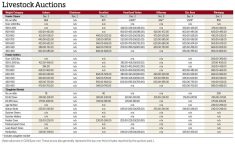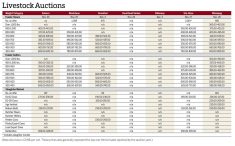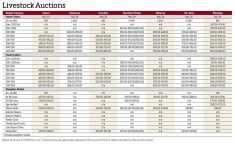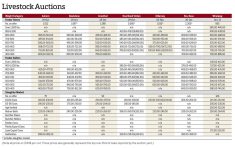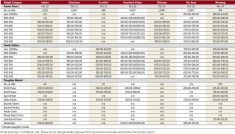After the drought of 2021, the ample spring precipitation seen across much of Manitoba this April should give pastures a good start for 2022. However, the sheer amount of rain and snow all at once has also led to muddy yards and impassable roads, limiting activity at the province’s cattle markets during the last week of the month with some auctions not holding a sale as they wait for drier weather. Prices for what was moving held firm.
“Volumes were extremely low due to the wet, inclement weather we’ve had,” said Rick Wright, senior Manitoba buyer with JGL Cattle. The poor condition of side roads and cattle yards, along with seasonal weight restrictions, were making it difficult to get animals to and from markets, he said.
“The demand was very strong for the grass cattle, with anything under 750 pounds meeting very strong demand,” Wright said, describing the rest of the market as steady.
Read Also

Riding market swings can add farm profit
Regular price trends in the grain market can help farmers pinpoint how and when to sell their grain with more confidence, analyst says
Movement was in all directions, with higher-quality cattle heading east, heifers to the U.S. and heavier-weight steers mainly destined for Alberta feedlots.
“A lot of the guys were a little later buying their grass cattle this year, just because of the feed shortages — they didn’t have extra feed,” Wright said, accounting for some of the buying interest. He added the moisture in eastern Saskatchewan and all of Manitoba is getting producers a little more enthusiastic about adding grass cattle.
The precipitation should help pastures improve and bodes well for the upcoming grain crop, although Wright cautioned that there was still a long growing season ahead, noting, “we’ve had a good start, and will need some timely rains.”
In addition, while the moisture should help in the long run, it also means a late start to spring seeding, which may eventually lead to concerns for grain supplies.
On the butcher side, the cow market remains very strong as the drought saw more animals than normal move last year and now the smaller numbers available are being met with good demand. Wright said packers were making good margins, keeping prices well supported.
However, for cow-calf producers, margins remain very slim despite high feeder prices, as both feed and transportation costs remain very high.
Wright said freight costs have climbed by 20 to 25 per cent over the past six months, which would normally come off the price of cattle. While that hasn’t happened yet, he recommended producers consider insurance or other risk management opportunities if available.
Looking ahead, “we expect next week to be fairly aggressive,” Wright said, noting some places have two weeks of cattle stacked up to move.
Once that backlog is cleared up, he expected activity would slow down, with many auctions moving from a weekly to biweekly schedule.
“These guys want to move the cattle… everyone is short of feed and pens are mucky, so if they can get the cattle out, they’ll get them sold next week.”




